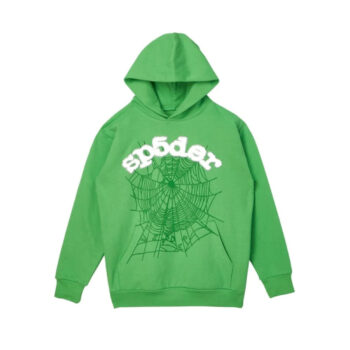In a world where branding has become a paramount component of a company’s identity, typography, in tandem with color, plays an indispensable role. Often overlooked, the art of typography is akin to selecting the right attire for an occasion – it sets the mood, builds anticipation, and, most importantly, communicates intent. The role of typography in logo design stands testament to its pivotal function in crafting brand identities. Nestled in the heart of Australia, Melbourne, with its eclectic blend of cultures and rich history of art and design, stands as a testament to the profound impact of typography on branding. This deep dive aims to uncover the intricate dance between typography and brand identity, spotlighting how Melbourne’s brands leverage this powerful duo to narrate their unique stories.
The Power of Typography
The Silent Communicator
Have you ever considered how a simple font change can alter the way you perceive a message? Just like the difference between a formal suit and casual jeans, typography sets the tone and context for any piece of content azp300x.
Melbourne’s Typographic Tapestry
Melbourne’s rich cultural landscape reflects in its diverse typographic choices. Every font tells a story, echoing the city’s multiculturalism and innovative spirit.
Decoding Melbourne’s Typography Choices
Elegant Serifs – The Classy Choice
Elegance, sophistication, and tradition – that’s what serifs represent. Many high-end brands in Melbourne use serif fonts to evoke a sense of luxury and timelessness.
Clean Sans-Serifs – The Modernist’s Delight
Ever noticed how startups and tech companies love sans-serif fonts? They signify clarity, modernism, and efficiency – aligning perfectly with Melbourne’s forward-thinking ethos.
Handwritten Fonts – Personal and Authentic
The rise of artisanal cafes and boutiques in Melbourne sees a surge in handwritten fonts. They offer a touch of personalization, reminding us of the human hands behind the brand.
Bold Typefaces – The Attention Grabbers
Brands that aim to stand out and make a statement often opt for bold typefaces. They shout, “Look at me!” and are perfect for brands with a youthful and audacious spirit.
The Role of Color in Typography
Typography isn’t just about selecting a typeface; the color chosen can drastically influence how the message is received by the audience.
The Psychology of Color
Colors have a profound impact on our emotions and decision-making processes. For instance:
- Red often denotes excitement, passion, or even danger. It’s attention-grabbing and vibrant.
- Blue signifies trust, dependability, and calmness. It’s no wonder many financial institutions and tech companies opt for various shades of blue.
- Green represents growth, organic, and freshness. This color is prevalent among health and wellness brands, as well as sustainable initiatives.
- Yellow exudes optimism, clarity, and warmth. Brands wanting to appear friendly and approachable might lean towards this color.
Color and Brand Recognition
Imagine McDonald’s golden arches in blue or Facebook’s logo in red. Feels off, right? Color plays a significant role in brand recognition. Research suggests that color can increase brand recognition by up to 80%.
Color Consistency Across Platforms
For brands, maintaining color consistency across various platforms, be it digital or print, is crucial. A consistent color scheme ensures better brand recall and a cohesive brand image.
Success Stories: Brands Doing It Right
‘Melbourne Art House’ – Dynamic and Creative
- Font Choice: A playful script font that feels free-flowing.
- Color Palette: A mix of deep purple representing creativity and gold accents for a touch of luxury.
- Why It Works: The choice encapsulates the brand’s essence as a hub for artistic expression and high-end exhibitions.
‘EcoLife Melbourne’ – Sustainable and Grounded
- Font Choice: A simple sans-serif typeface, clean and straightforward.
- Color Palette: Earthy greens and browns.
- Why It Works: It resonates with their target audience who are eco-conscious. The combination underscores the brand’s commitment to sustainability and eco-friendly products.
‘Glam & Glow Melbourne’ – Elegant and Radiant
- Font Choice: An elegant serif typeface exuding sophistication.
- Color Palette: Rosy pinks and muted golds.
- Why It Works: Perfect for a beauty and skincare brand, the typography and color choices communicate luxury, beauty, and elegance.
The Future of Typography in Branding
Typography, like all facets of design, is ever-evolving. As we gaze into the horizon, certain trends, innovations, and shifts in the realm of typography beckon. Melbourne, with its pulse on global design trends while staying true to its local essence, stands at the forefront of these changes.
Embracing Technology and Digital Platforms
The digital era has brought with it new platforms and mediums. Augmented reality (AR), virtual reality (VR), and immersive websites offer brands new canvases to paint their stories. Expect to see typography that interacts dynamically with users, offering tailored experiences based on user behavior and preferences.
The Rise of Variable Fonts
Variable fonts, which allow designers to derive multiple styles from a single font file, are seeing a surge in popularity. They are not only efficient in terms of file size but also offer an unparalleled level of flexibility. Brands can tweak weight, width, and other typographic attributes on-the-fly, ensuring optimal readability across diverse platforms and devices.
Emphasis on Accessibility
With a growing awareness of inclusivity, brands are prioritizing accessibility in their design choices. This means selecting typefaces and font sizes that are legible for everyone, including those with visual impairments. Expect to see fonts that are versatile and can adapt to various accessibility settings, ensuring no one is left out of the conversation.
Return to Organic and Hand-drawn Fonts
In a digital-dominated world, there’s a budding nostalgia for the human touch. Brands, especially those in artisanal and craft-centric sectors, are veering towards hand-drawn fonts. These fonts evoke a sense of authenticity, warmth, and personal connection, standing as a gentle reminder of the human hands and hearts behind a brand.
Global Influence with Local Roots
As Melbourne continues to be a melting pot of cultures, its brands will reflect global design trends. However, there will always be a distinctive Melbourne flavor. Whether it’s the laid-back, beachy vibes or the bustling, urban energy of the city’s cafes and galleries, local nuances will continue to influence typographic choices amazons gpt55x.
Concluding
As we’ve journeyed through the vibrant streets of Melbourne, exploring the myriad ways typography and color craft the narrative of a brand, one realization stands clear: typography is more than just letters on a screen or paper. It’s a storyteller, an identity builder, and a silent yet potent communicator. The synergy of font choice and color palette can elevate a brand from being just another name in the market to an entity that resonates, connects, and remains etched in the memories of its audience.
As Melbourne continues to thrive as a hub of innovation and creativity, the role of typography in shaping its brands will remain ever-significant. The next time you stroll through Melbourne or browse through a local website, pause and ponder – what stories do the fonts and colors around you narrate? And how do they make you feel? In this dance of fonts and hues, lies the essence of a brand’s soul.
FAQs:
Why is typography important in branding?
Typography sets the tone for a brand, aiding in communication and influencing perceptions.
How do colors complement typography in branding?
Colors evoke emotions and, when paired with the right font, can amplify the brand message.
Are custom fonts becoming the new norm in Melbourne?
Yes, as brands seek more personalization, custom fonts are on the rise.
How do bold typefaces influence consumer perceptions?
Bold fonts grab attention and often signify strength, confidence, and modernity.
What’s the difference between serif and sans-serif fonts?
Serif fonts have small decorative lines (serifs) at the end of letter strokes, whereas sans-serif fonts do not.







